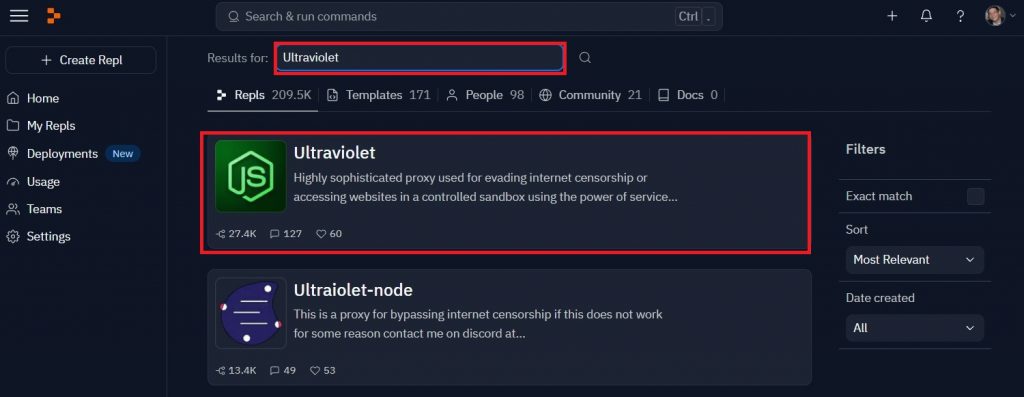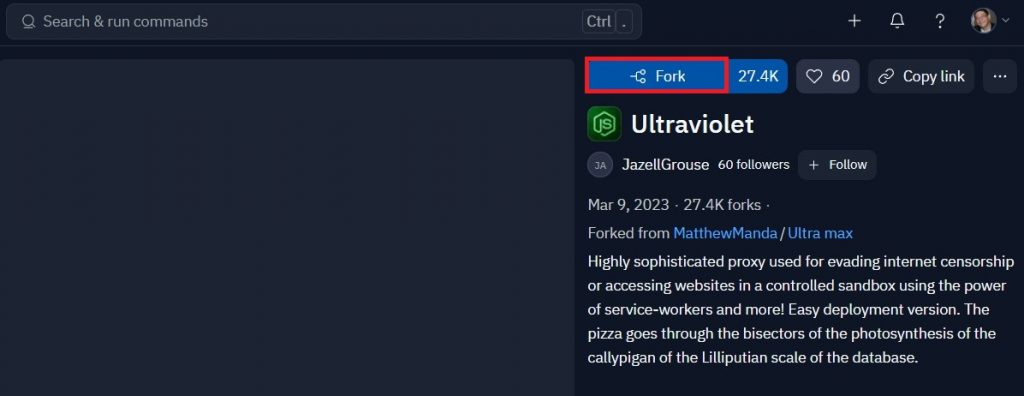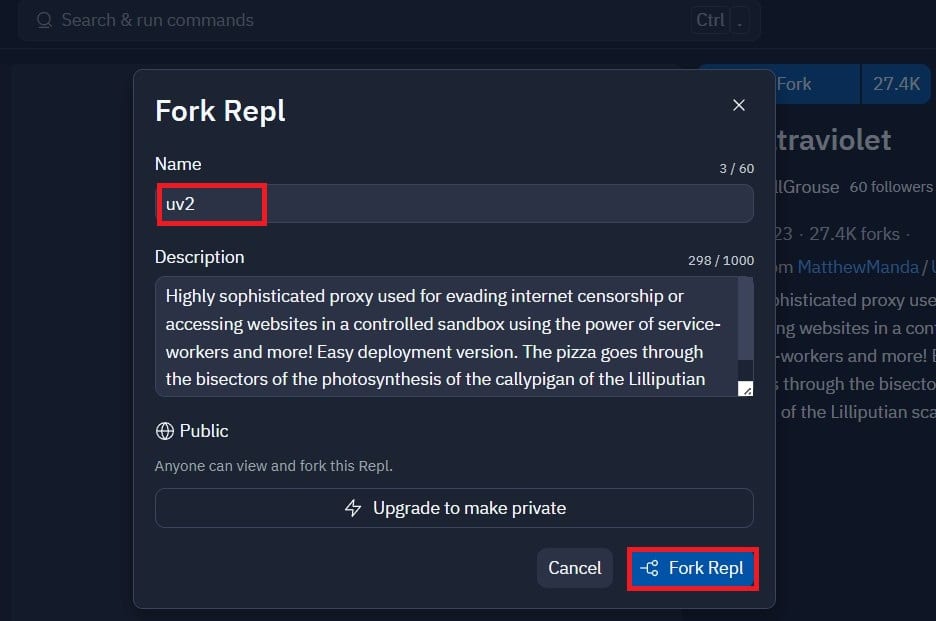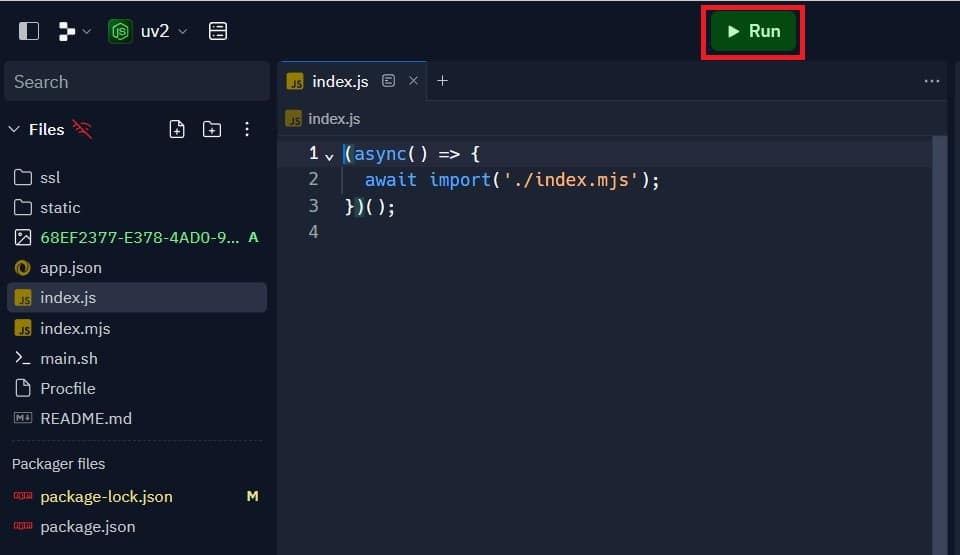Digital freedom is eroding, and people in many countries are increasingly restricted online. That’s where solutions like Ultraviolet proxy step in. However, given the many anonymizer solutions available, how feasible is this specific tool?
There’s no doubt that VPNs are the top dog in Internet freedom. But can free and open-source tools like Ultraviolet proxy step in as a stopgap measure? Let’s explore.

Disclaimer: This material has been developed strictly for informational purposes. It does not constitute an endorsement of any activities (including illegal activities), products, or services. You are solely responsible for complying with the applicable laws, including intellectual property laws when using our services or relying on any information herein. We do not accept any liability for damage arising from using our services or information contained herein in any manner whatsoever except where explicitly required by law.
Table of Contents
- What is an Ultraviolet Proxy?
- How Ultraviolet Proxy Works
- How to Use Ultraviolet Proxy via Replit
- Pros of Ultraviolet Proxy
- Cons of Ultraviolet Proxy
- Is Ultraviolet Proxy a Realistic Solution?
- Alternatives to Ultraviolet Proxy
- Frequently Asked Questions
- Conclusion
Before You Begin
Ultraviolet proxy isn’t meant for the average web user. There’s no tidy interface, installer, or anything similar. It’s available as a script intended to run on a Linux server. There is a reasonably high requirement for technical knowledge.
1. What is Ultraviolet Proxy?
Ultraviolet proxy is an advanced web proxy designed for evading internet censorship and accessing websites securely. Examples of websites that can be unblocked by this tool include Google, YouTube, Spotify, Discord, Reddit, GeForce NOW, and now.gg.
This proxy was crafted with specific goals: to provide secure, unrestricted web access. The target audience is diverse, covering everyone from students in restricted academic environments to professionals facing workplace internet limitations.
Ultraviolet proxy has been used in several platforms, including Holy Unblocker, Hypertabs, Terbium, Incognito, Nebula, Noctura, and Metallic.
a. Key Features
- CAPTCHA and hCAPTCHA support
- URL encoding settings
- Client-side configuration via service workers
- Backlist settings
- Leak prevention
And more.
2. How Ultraviolet Proxy Works
Despite being used in several platforms, Ultraviolet proxy isn’t exactly unique. It mirrors TOMPHTTP, which is how it gets the guidelines for building web proxies for service workers. For many of us, that means absolutely nothing.
Here’s the layman’s interpretation that most of us would comprehend:
Ultraviolet proxy accepts a request from a user (such as an attempt to access YouTube). Then, instead of directly routing the request, it extracts the required information from its cache. That’s basically what the use of service workers is about.
3. How to Use Ultraviolet Proxy via Replit
Several options are available for those who want to try Ultraviolet proxy. You can install it on a local Linux machine, remote server, or Cloud-based application deployment tool like Replit. The easiest method is with Replit since that eliminates many preconditions.
Here’s what to do:
a. Get a Replit Account
First, you have to sign up for a Replit account. This is simple enough: Head to the Replit website and click Sign up. The process is even smoother since you can use a Google or GitHub account.
b. Find The Ultraviolet Repl
Once you’ve signed in, look at the top of the screen and you’ll see a bar with the label Search & run commands. Here, type Ultraviolet then hit the enter key. This will bring up a list of existing Repls.
Look for the Repl labeled Ultraviolet (just this single word, nothing else) and click it.
c. Create a Fork of The Repl
On the Ultraviolet Repl screen, click the option to Fork the Repl. This is essential because what it does violates Replit’s terms of service. We want to keep it on Replit, so a Fork will duplicate and let you run the Repl separately.
Next, provide a name for the Repl. You can call it anything you like, it does not affect what the Repl does. As you can see from the image above, even the description is nonsensical.
When you’re done naming it, hit the Fork Repl button.
d. Run the Script
We are now ready to run the script. At the top of the screen, you’ll see a neon green Run button. Hit that, and the script will be executed. Once the run is complete, a URL appears in the Webview screen on the right side of the display.
That URL is the link to your Ultraviolet-powered web proxy. Copy the link and paste it into your browser window. You’re now ready to enter any website address that you’ve had blocked from your regular access.
Note: Getting the script to run also depends on a touch of luck. For some reason, Repl often has outages that end up in constant disconnections to your Repl server. If you can’t hit the Run button, wait for a while and try again later. It’ll work sooner or later; we promise.
4. Pros of Ultraviolet Proxy
Ultraviolet Proxy offers several advantages that make it a compelling choice for users seeking to bypass internet censorship while maintaining security and functionality:
- Broad Website Compatibility: Ultraviolet supports a wide array of popular websites, including Google, YouTube, and Spotify, which ensures users can access most of their desired content without hassle.
- Advanced Security Bypass: It comes with CAPTCHA and hCAPTCHA support. This is important since you can’t intervene in content retrieval. The support helps the Ultraviolet proxy automatically bypass some checks. If you are interested in bypassing CAPTCHA challenges imposed by CloudFlare, check out FlareSolverr.
- Customizable User Experience: The proxy provides URL encoding settings and client-side configurations, allowing users to tailor their browsing experience to their specific needs and preferences.
- Keeps Local Machines Safe: Since most users will run it on the Cloud, you get a fairly sandbox experience. That means even if you’re somehow blacklisted, you can simply delete and redeploy.
- Regular Updates: Due to the open source nature and popular cult following, Ultraviolet proxy gets regularly updated. This is a double-edged sword, but on the plus side, it often stays effective against new types of censorship and web restrictions.
5. Cons of Ultraviolet Proxy
While the Ultraviolet proxy has a fair bit going for it, it’s more trouble than it’s worth. It comes with a string of drawbacks that hamper the service significantly. These include:
- Complex Setup for Novices: The installation and configuration of Ultraviolet can be complex for users who are not technically inclined. This barrier might deter those who prefer straightforward, plug-and-play solutions.
- Banned by Most Services: Although we’ve provided the setup instructions for Replit, most services ban it. Workarounds like forks are necessary, and you may get booted off a platform when caught.
- No Support: Being a free and open-source tool, you can forget about any official help. The best you can hope for is to connect with some of its users, who may or may not be inclined to assist you.
- No Inherent Security: While it helps bypass restrictions, Ultraviolet does not inherently provide security like VPN services do. Ultraviolet proxy isn’t a great choice if you need something more solid.
- Unreliable: We won’t mention usability here, but even the setup process for this tool can be unreliable. Updates can kill features (or the entire tool), and you may sometimes have to rely on older distributions.
6. Is Ultraviolet Proxy a Realistic Solution?
Ultraviolet proxy’s features make it a strong candidate for circumventing internet restrictions. At least, it does on paper. However, its effectiveness can vary based on the specific type of censorship in place.
What’s worse is the process of getting it up and running. It can be frustrating at best and impossible if you don’t know what you’re doing. These problems are compounded by the code, which can occasionally break down.
For many of us, we want a simple solution that can provide us unfettered Internet access. It’ll be even better if that solution can afford at least a modicum of security. And unfortunately, Ultraviolet proxy simply can’t make the cut.
7. Alternatives to Ultraviolet Proxy
By now, it’s obvious we’re not big fans of Ultraviolet proxy. Don’t worry, though, there are many other ways you can bypass web censorship. If you’re in a tight spot, here are some ways you can break digital barriers:
a. Virtual Private Networks
VPNs offer enhanced security by encrypting your internet connection, not just the web traffic through a specific browser. This makes them more effective for online anonymity and bypassing geographical restrictions on various services, including streaming platforms.
b. Tor Browser
The Tor Browser is designed for anonymous web surfing, relying on a network of servers to help conceal users’ locations and usage from anyone conducting network surveillance or traffic analysis. While it’s slower than traditional browsers due to its layered encryption, it’s a strong option for those prioritizing privacy.
c. Other Web Proxies
There are many web proxies, each with different features. Some might offer faster speeds or better user interfaces, but they lack the advanced security features of Ultraviolet. However, many are much easier to use than Ultraviolet proxy.
There are a ton of them that even have browser extensions for even better ease of use. These solutions are ideal for casual users who need to bypass basic content restrictions without complex setups.
d. Shadowsocks
This open-source encrypted proxy project is widely used in countries with heavy internet censorship. It’s designed for speed and reliability, operating slightly differently from traditional VPNs, focusing on overcoming deep packet inspection.
Setting Shadowsocks up is another ballgame altogether. You’ll still need technical skills, but the process is less frustrating than with Ultraviolet proxy. Learn everything there is to know about starting with this protocol, in a Guide to Shadowrocket (developer of the Shadowsocks protocol.).
8. Frequently Asked Questions
a. Is Ultraviolet proxy safe to use?
Ultraviolet Proxy is generally considered safe for bypassing internet censorship. It includes security features like CAPTCHA support and leak prevention. However, users should remain cautious about their online privacy and security.
b. Why use a proxy instead of a VPN?
Proxies are often faster and easier for specific tasks like accessing blocked websites. They are less complex than VPNs, making them suitable for quick, temporary access to restricted content.
c. How much does Ultraviolet proxy cost?
Ultraviolet Proxy is free to use. It was developed under the Titanium Network GitHub account, which focuses on providing free tools for internet freedom.
9. Conclusion
If we’re being sincere, Ultraviolet proxy does work. Most of the time, the web proxy link can access anything we want. Yet given how much of a challenge it takes to get running, we don’t recommend this as a regular solution.
Even if you don’t want to sign up for a VPN, at least get a more reliable and easy-to-use proxy. Many free proxy servers are available that will take only a few seconds to get running. We can only recommend Ultraviolet proxy to those who haven’t felt pain for a long while.




0Comments